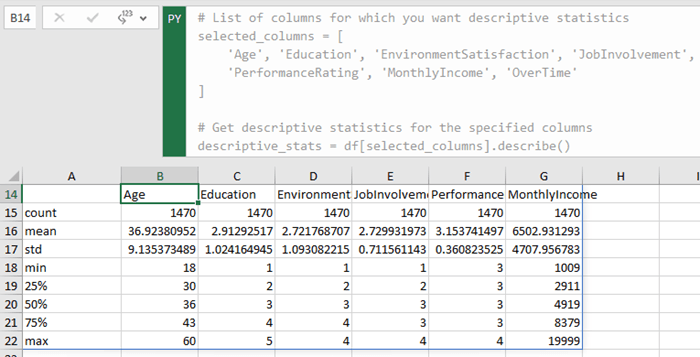5 Ways to Loop Through Excel Sheets in Python

Handling data from multiple Excel sheets efficiently can significantly boost productivity, particularly when you need to perform repetitive tasks across many sheets. Python, with its simplicity and versatile libraries like Pandas, provides several methods to loop through Excel sheets. Here's a look at five effective ways you can automate this process.
Method 1: Using Pandas with ExcelFile

The Pandas library in Python is renowned for its data manipulation capabilities, making it an ideal tool for handling Excel files.
- Install Pandas: If not already installed, use
pip install pandas openpyxl. - Load the Workbook:
import pandas as pdpath = ‘your_excel_file.xlsx’ xls = pd.ExcelFile(path) - Loop Through Sheets:
for sheet_name in xls.sheet_names: df = pd.read_excel(xls, sheet_name) # Process your data here print(f”Sheet Name: {sheet_name}“) print(df.head())
This method allows you to easily navigate through all sheets in an Excel file, leveraging Pandas’ powerful data reading capabilities.
Method 2: Using openpyxl Directly

If you prefer not to use Pandas, openpyxl provides a lower-level access to Excel files:
- Install openpyxl: Use
pip install openpyxl. - Open the Workbook:
from openpyxl import load_workbookwb = load_workbook(filename=‘your_excel_file.xlsx’, read_only=True, data_only=True) - Loop Through Sheets:
for sheet in wb.worksheets: print(f”Sheet Title: {sheet.title}“) # Here you can access cells, read data, or perform other operations
This approach is suitable for when you need to perform more granular operations within each sheet.
Method 3: Using xlrd

Another useful library for reading Excel files is xlrd:
- Install xlrd: Use
pip install xlrd. - Open the Workbook:
import xlrdbook = xlrd.open_workbook(‘your_excel_file.xls’) - Loop Through Sheets:
for sheet in book.sheets(): print(f”Sheet Name: {sheet.name}“) # Now you can work with each sheet
xlrd is particularly useful for older Excel formats and offers fine control over data extraction.
Method 4: Integrating with XlsxWriter

XlsxWriter is mainly for writing Excel files, but it can also be used to read and loop through sheets:
- Install XlsxWriter: Use
pip install XlsxWriter. - Read the Workbook:
import xlsxwriterwb = xlsxwriter.Workbook(‘your_excel_file.xlsx’) sheets = wb.sheetnames - Loop Through Sheets:
for sheet_name in sheets: worksheet = wb.get_worksheet_by_name(sheet_name) # Here you can write or read data
This method is particularly useful if you need to read and then write back into the same Excel file.
Method 5: Custom Function Approach

For complex data processing or when you need more control, creating a custom function can be advantageous:
- Define the Function:
def process_sheet(sheet): # Your logic for processing each sheet print(f”Processing sheet: {sheet.title}“) for row in sheet.iter_rows(values_only=True): print(row) - Loop Through Sheets:
from openpyxl import load_workbookwb = load_workbook(filename=‘your_excel_file.xlsx’, read_only=True) for sheet in wb.worksheets: process_sheet(sheet)
This method is flexible and can be tailored to fit specific requirements for processing data from multiple sheets.
Summarizing these methods, Python provides several robust options to loop through Excel sheets, each catering to different needs:
- Pandas with ExcelFile for efficient data manipulation.
- openpyxl for direct access and fine-grain control.
- xlrd for reading older Excel formats.
- XlsxWriter for reading and then writing back into Excel.
- Custom Functions for tailored data processing tasks.
Each method has its strengths, depending on the complexity of your data processing needs and the nature of the Excel files you are working with. By choosing the right tool, you can streamline your workflow, making repetitive tasks across multiple Excel sheets much more manageable and productive.
What are the advantages of using Pandas to handle Excel files?

+
Pandas provides high-level, user-friendly tools for data manipulation, allowing for easy filtering, grouping, and reshaping of data. Its integration with libraries like Matplotlib for plotting also makes it a comprehensive solution for data analysis tasks.
Can I use these methods with Google Sheets?

+
Directly, no. However, you can export Google Sheets as Excel files or use Google’s API with Python to interact with Google Sheets.
How do these methods handle large Excel files?

+
Methods like openpyxl’s read-only mode or setting keep_default_na=False in Pandas can help manage memory usage when dealing with large datasets. Additionally, chunking data or using generators can further enhance performance for very large files.
Are there limitations when looping through sheets?

+
Yes, each method has its limitations:
- Pandas might struggle with very large files unless optimized.
- openpyxl has no built-in caching for performance.
- xlrd is limited to older Excel formats.
- XlsxWriter can be slow if you’re frequently switching between reading and writing modes.
What happens if I try to loop through an Excel file with password protection?

+
Most of these libraries do not directly support password-protected Excel files. You would need to manually decrypt or use other specialized tools to access the data before employing any of these looping methods.